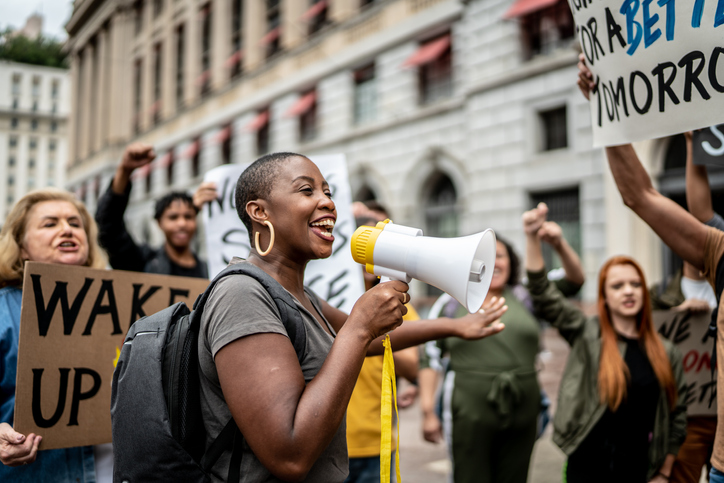Tips to Remember While Peacefully Protesting
These seven tips are a must when you're participating in a protest.
 (Getty Images)
(Getty Images)
With ongoing global tragedies and threats, it is a normal response to engage in protesting. In the United States, it’s entirely within your rights to peacefully demonstrate in public.
The First Amendment protects your right to assemble and protest. However, police and other government officials are allowed to restrict free speech rights.
If you intend to protest, whether for the first or fifty-first time, consider these tips to protect yourself.
Identify an emergency contact and utilize the buddy system
Don’t go to a demonstration by yourself. It’s a good idea to go with a friend or a group. This way, if you find yourselves in danger or separated due to a circumstance beyond your control, you’ll have a place to meet. It might be smart to have additional spots to meet at in case you need to pivot.
Make sure you have an emergency contact who isn’t present at the protest, who knows your full name, birth date and the details of the protest you are attending. In the event that something happens to you, this person will be prepared to advocate for your whereabouts.
Make sure you and your group are clear about the protest’s location. Consider whether the area has a curfew, public restrooms or if there have been previous violent escalations as a result of protests.
Disable your phone’s Face or Touch ID
It is in your best interest to not use your phone for any reason during a protest. Taking it a step further, manually replace your phone’s password with a numerical code to keep your phone unlocked on your terms in case something happens to you or if your phone is in someone else’s hands.
Additionally, setting your phone on airplane mode and disabled data is the best way to conceal any digital form of your identity.
Write important phone numbers down on your body in permanent marker
You’ll be unable to use your phone or have access to a notepad during the demonstration, so you need to have the number to legal aid, emergency contacts and other important assistance avenues. Writing these numbers on your forearm for reference ahead of time with a Sharpie marker.
Wear solid colors and cover anything that can be specifically identified
Coordinating an all-black outfit is a typical symbol of most solidarity protests. However, it is recommended that being dressed in black or nondescript colors and patterns is standard for protests, as it helps you blend in with a crowd. Covering your hair and any tattoos if possible can have the same effect.
Don’t wear contact lenses
When exposed to tear gas, wearing contact lenses can lead to permanent blindness. Resort to prescription glasses or sunglasses to shield yourself and your identity.
Nourish your body
Protests aren’t brief gatherings. Sometimes, they can last for hours and your body will need to be nourished. Keep a snack and some water on you as you fight for your rights.
If you are exposed to tear gas, you will have high energy and be better equipped to shield yourself as immediate contact with water is a sure remedy.
Consider bringing a sign and first aid items
Things like hand sanitizer and other first aid items are extremely important to keep nearby at a protest. You never know what could happen to you or the people you are with.
If you want to carry a sign, ensure that your slogan is written in big, bold letters on a poster board or a foam board. You can attach a flat wooden stick to the sign to create a handle.
Trinity Alicia (she/her/hers) is a Boston-based journalist. Follow her on X: @trinityaliciaa
Edited by NaTyshca Pickett